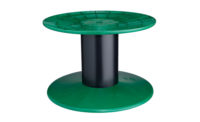Despite efforts from packers and retailers, the CDC estimates that about 1 million people in the United States experience foodborne illness from poultry alone each year. While brands already have set standards and protocols in place for food safety, every participant in the supply chain has a role to play. Packaging in particular plays a significant role in brand marketing, transportation, and protecting inside contents from outside elements, but functional packaging also aids in consumer and food safety.
Here are four ways packaging can help brands prioritize food safety for consumers:
Avoid cross-contamination with reclosable packaging
The basic functions of packaging are to contain, preserve, protect, and identify products being packaged. When it comes to raw and pre-cooked proteins, consumers should feel confident that the products they buy and bring into their homes will achieve these functions. To help preserve the product through its intended shelf life, meat packaging applications should have ample barriers and a quality closure. Overall, flexible packaging materials need to be robust enough to protect the product and prevent potential leakage. By adding a closure, packers can help contain purge juices from meat, helping to protect against cross-contamination after the package is opened and reclosed.
Curb the repackaging of products in consumers’ homes
Whether fresh or processed, protein products are often available in bulk for consumers to use over the course of multiple meals. If a package cannot be securely reclosed, consumers may feel obligated to repackage the contents themselves. In this scenario, many consumers may turn to clips, twist-ties, or rubber bands to “reclose” a package, or they may try reusable storage containers. If the consumer’s attempt at keeping food fresh proves ineffective, it could result in additional frustration with the brand and packaging.
To provide a positive experience and help reduce package waste, brands should seek to deter consumers from repackaging their products by adding a quality closure, where applicable. This is important because it allows consumers to reference the branding, as well as key information about when and where a product was produced, nutritional information, and who to contact in case of questions. Additionally, original packaging helps communicate best by dates and cooking instructions, further helping consumers avoid potential illnesses caused by spoiled or improperly prepared food.
Improve product freshness and post-purchase shelf life
The combination of proper package formats, effective films, and an efficient process can result in a flexible package that helps protect the product from oxygen and moisture. Once a hermetically sealed package is opened, it loses its ability to maintain a modified or protected atmosphere and conditions for microbiological growth may occur. This is where a quality closure can play a crucial role in helping to slow the exchange of air and moisture. As a result, reclosable packaging becomes an ally for the processor, as well as a benefit for the consumer.
Provide an additional sense of security and rule out tampering
Tampered food products can also be cause for concern when it comes to food safety. If there is evidence that a package has been opened before the consumer has opened it themselves, they would be rightfully wary of using the product. The added security of tamper-evident features can help reassure consumers that there hasn’t been any accidental, or potentially deliberate, intrusion of the package. For meat products, including a hermetic seal not only helps reassure consumers that their product is safe, but it can help maintain the proper atmosphere for the product.
Keep packaging safe
Recently individual states have begun passing laws to restrict the use of poly-fluoroalkyl substances, commonly called PFAS chemicals. These chemicals have been used since the 1940s for a wide range of applications and products including fabrics, cosmetics, paperboard, cookware and packaging. While they have excellent resistance properties to heat, grease, oil, and water, they do not break down easily, which is why they earned the nickname “forever chemicals.” These chemicals can enter the water table, causing health risks for animals and humans.
These new state laws affect some packaging materials, which previously contained PFAS. This change in legislation is gaining mainstream media attention so consumers are becoming more aware of PFAS and their growing concern is something brands may want to address. One possibility is adding reassurance to their packaging that the materials they use are up to date with current restrictions and requirements. Sharing this messaging on their website and social channels can also help educate consumers while building trust.
As the need for safe and convenient food products continues to grow, the industry will likely see more innovation in packaging applications for meat and poultry products. Designed to help keep food products safe and preserve freshness, functional packaging can help provide consumers with the confidence necessary to return to trusted brands time and time again.




Report Abusive Comment